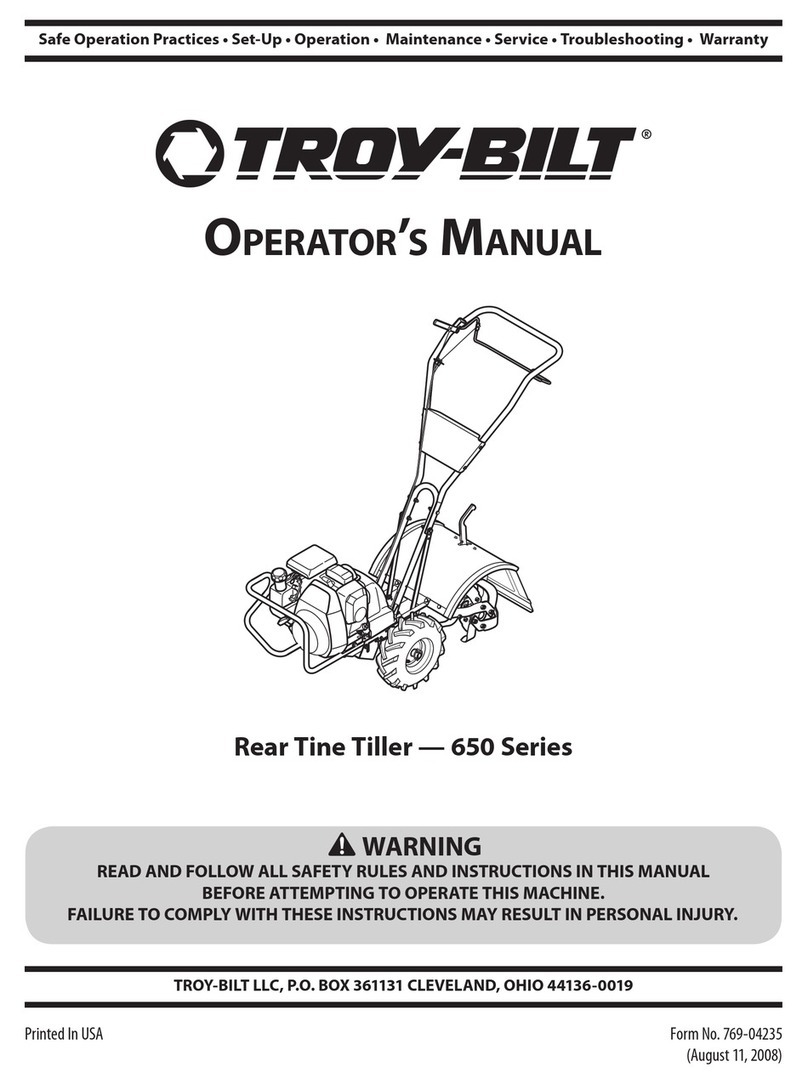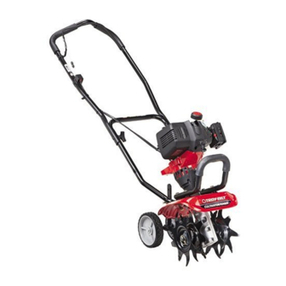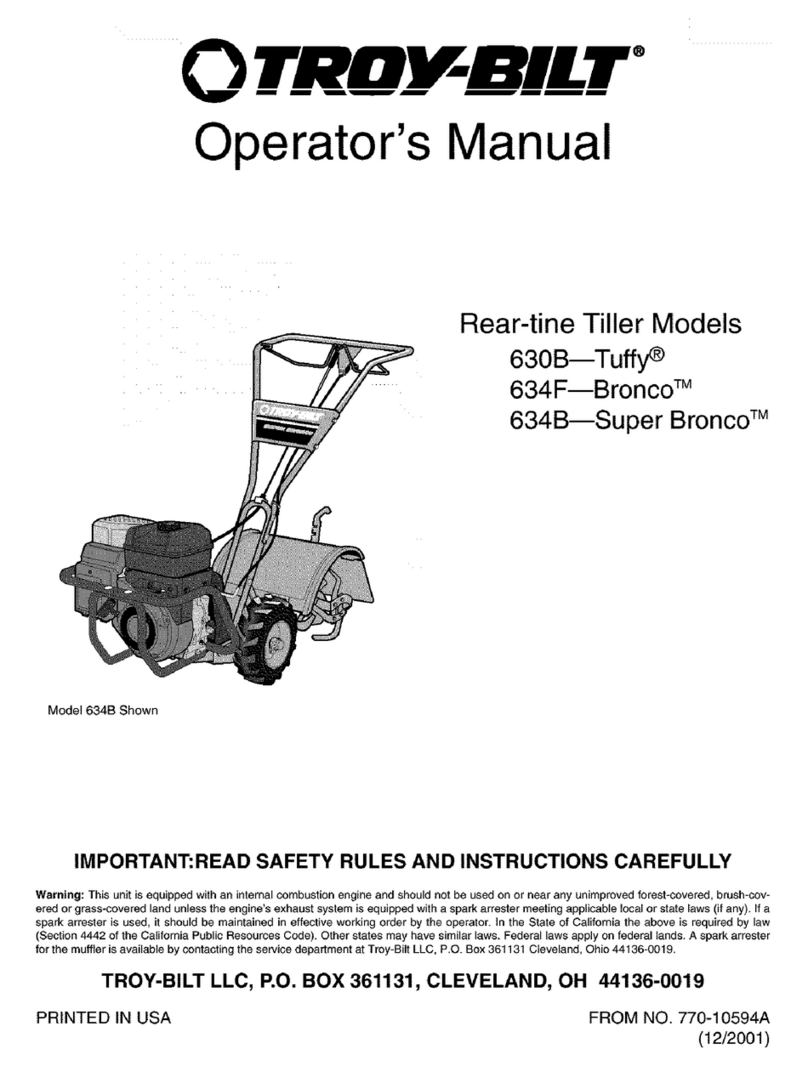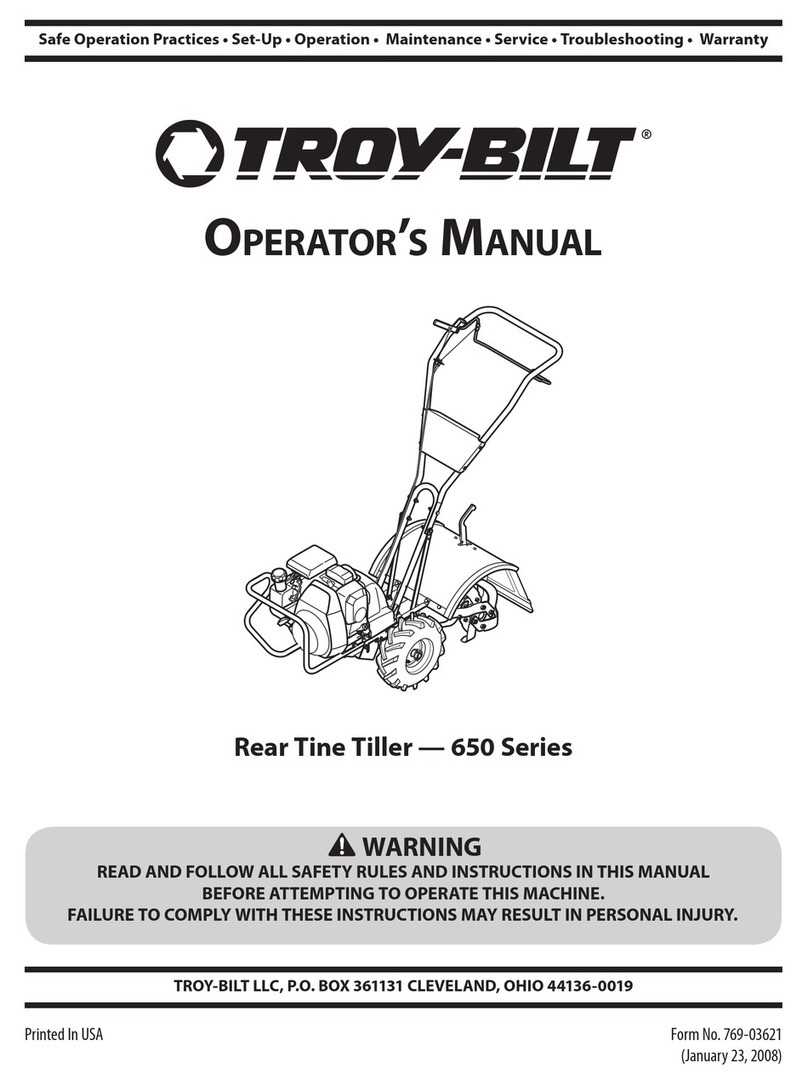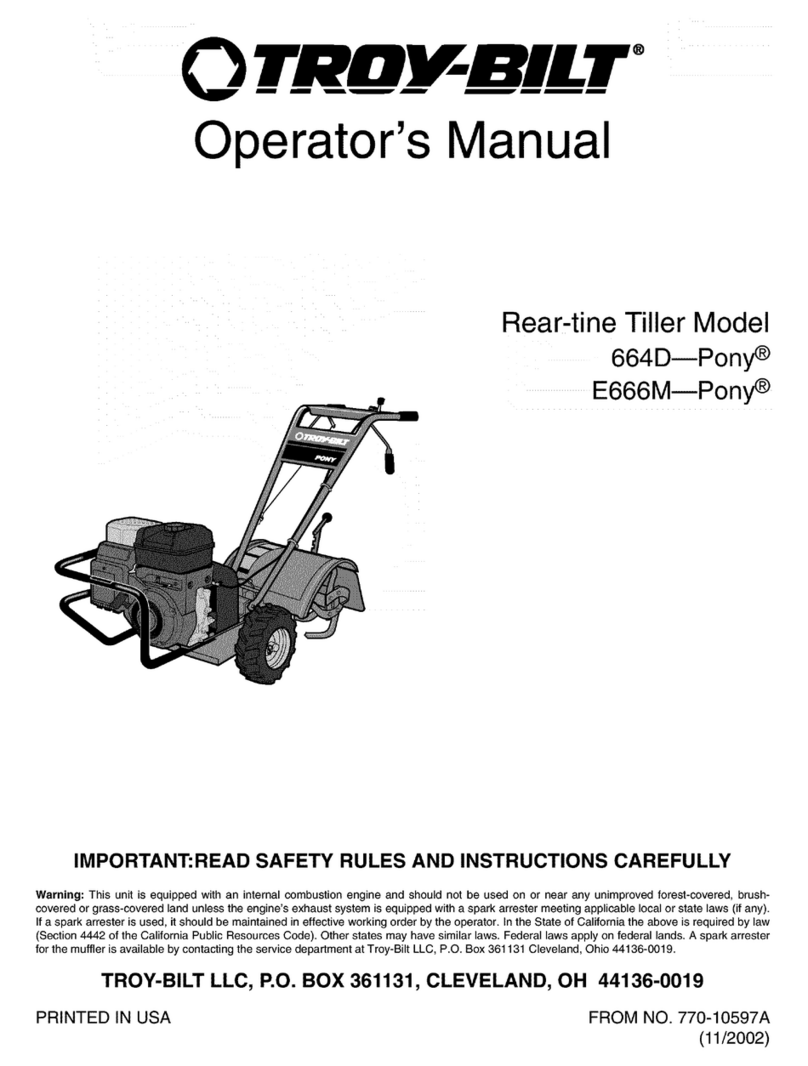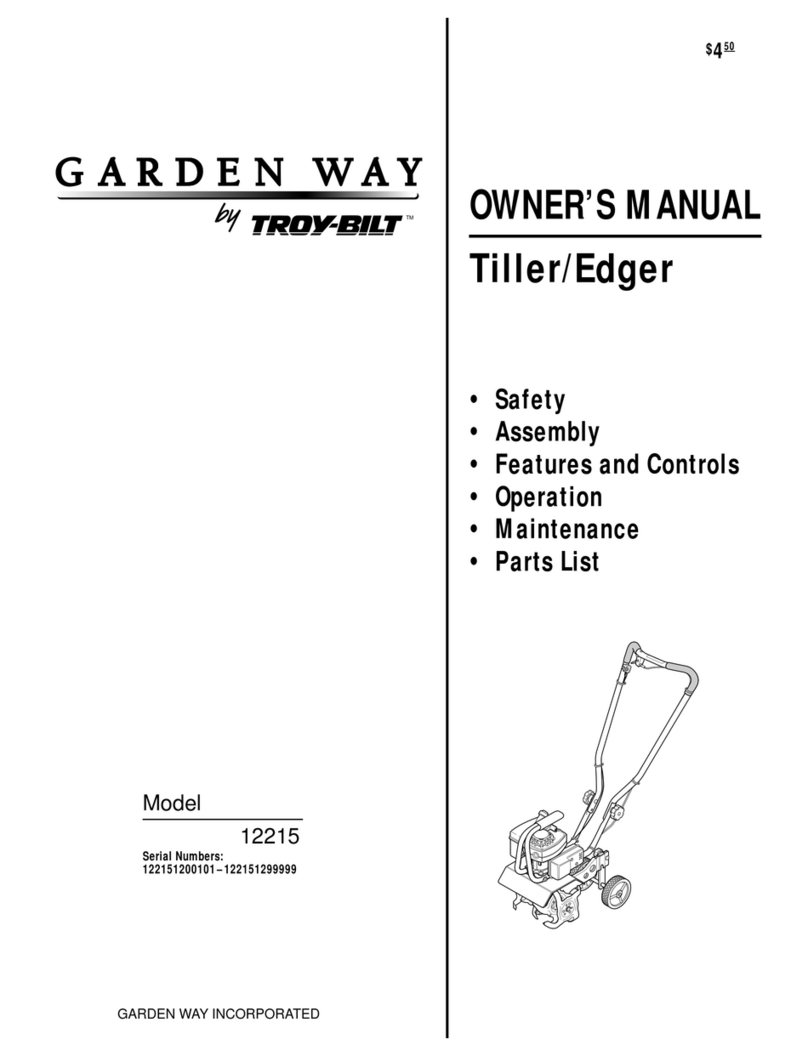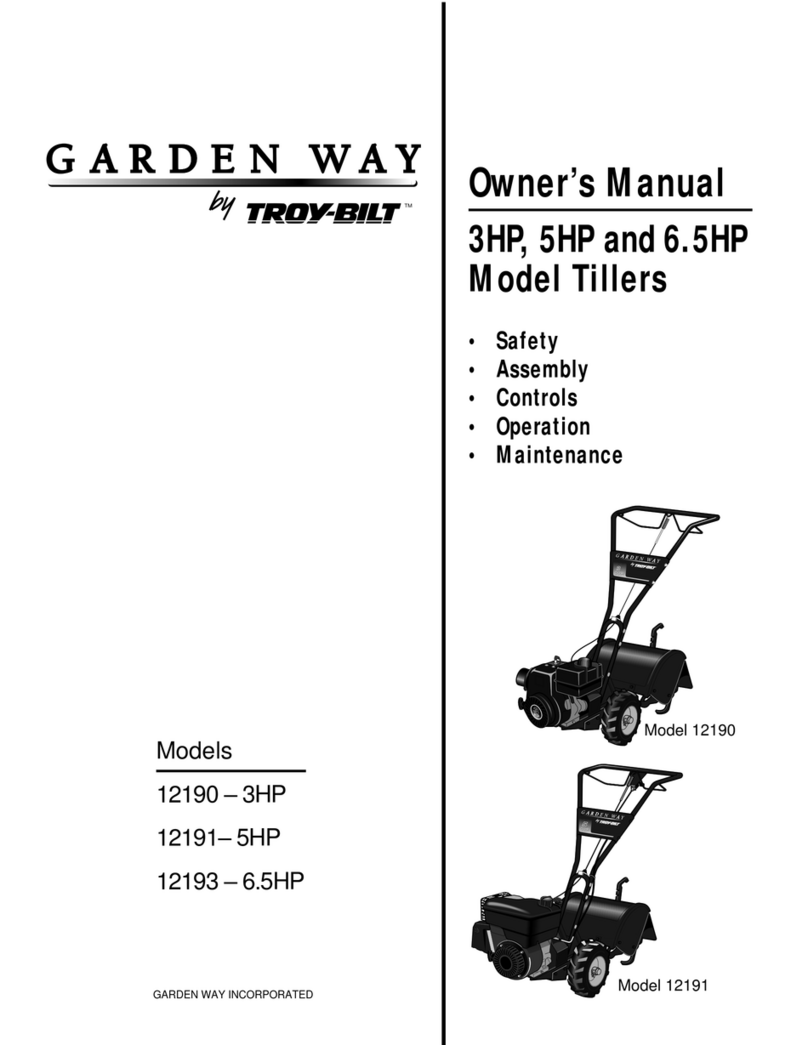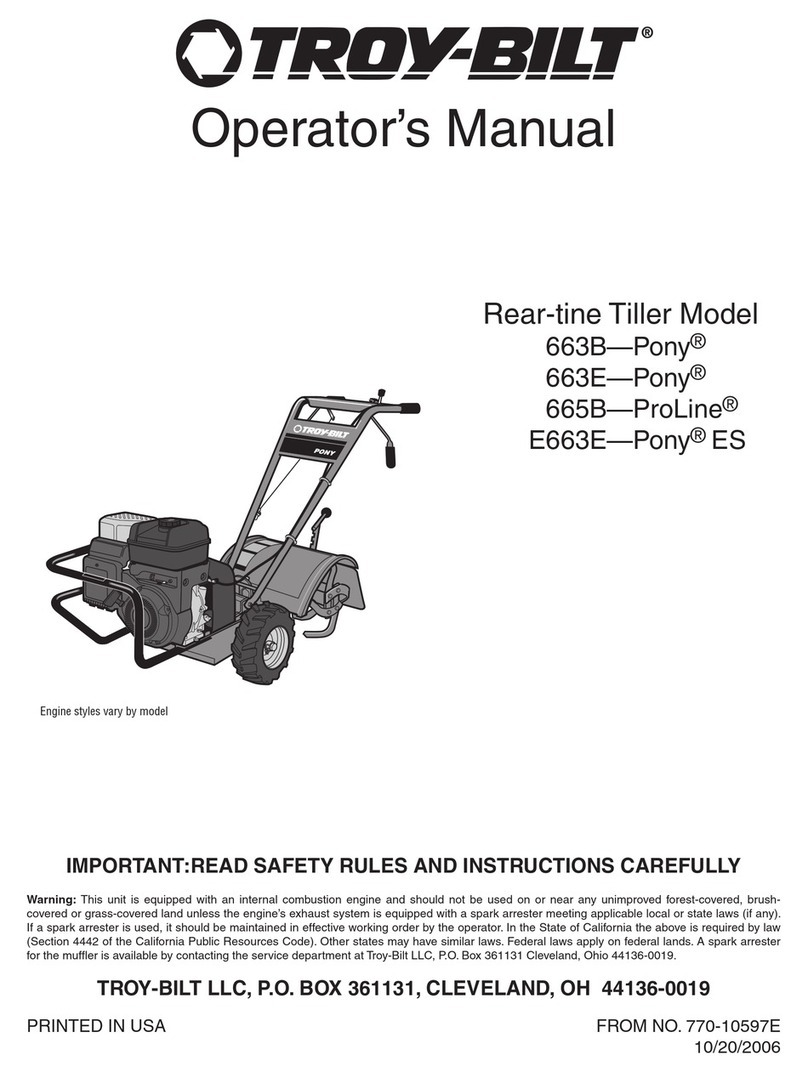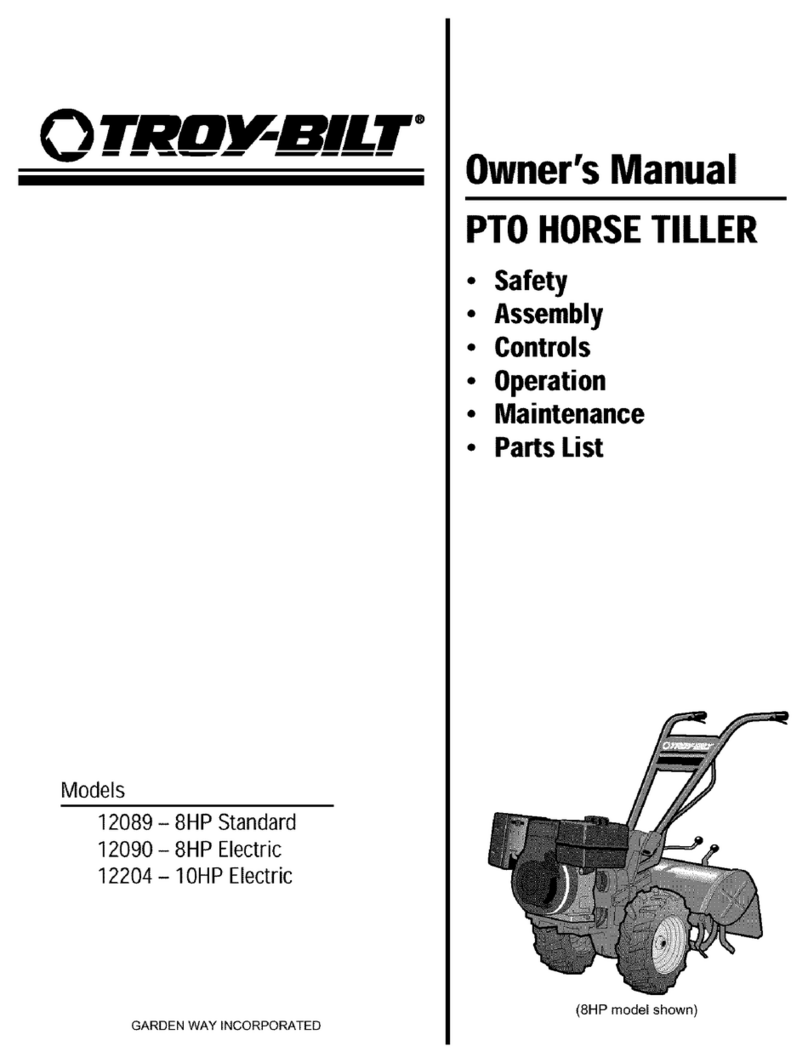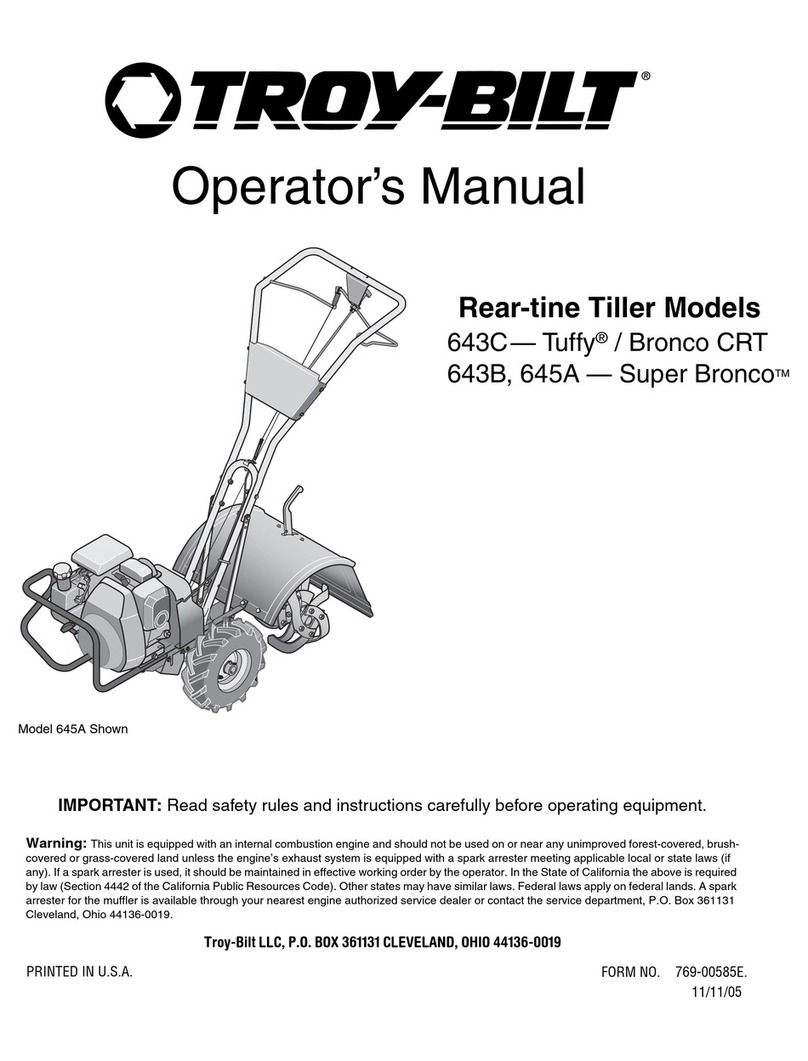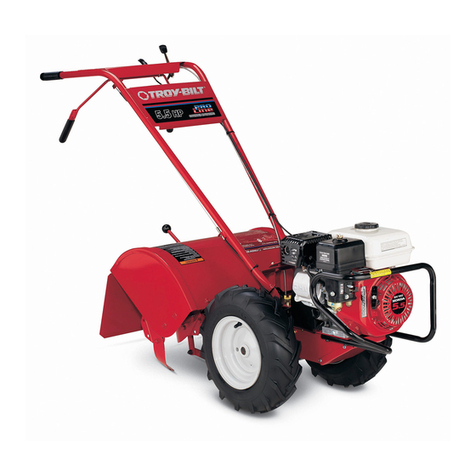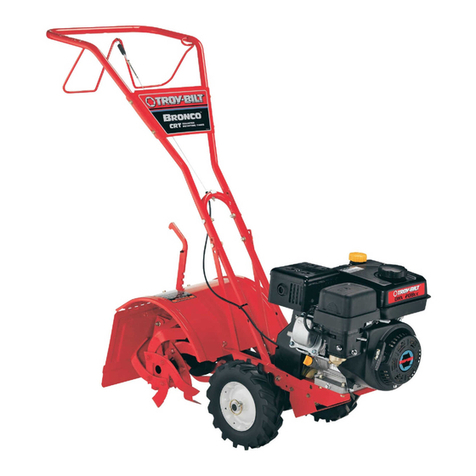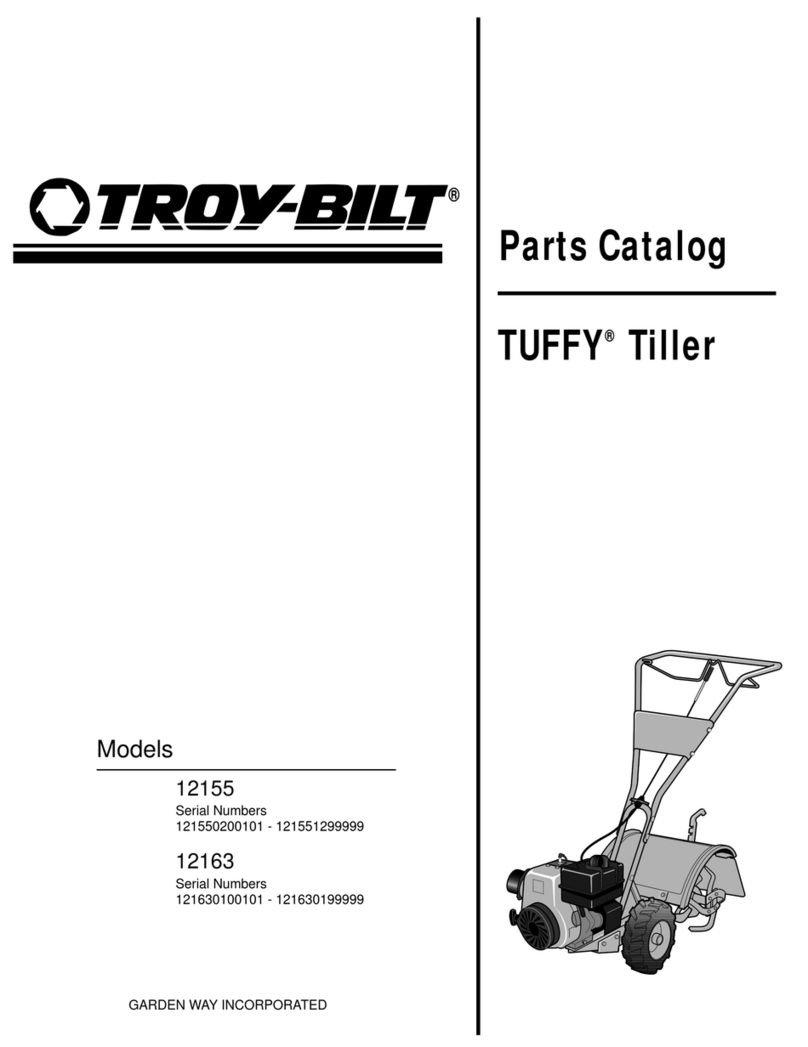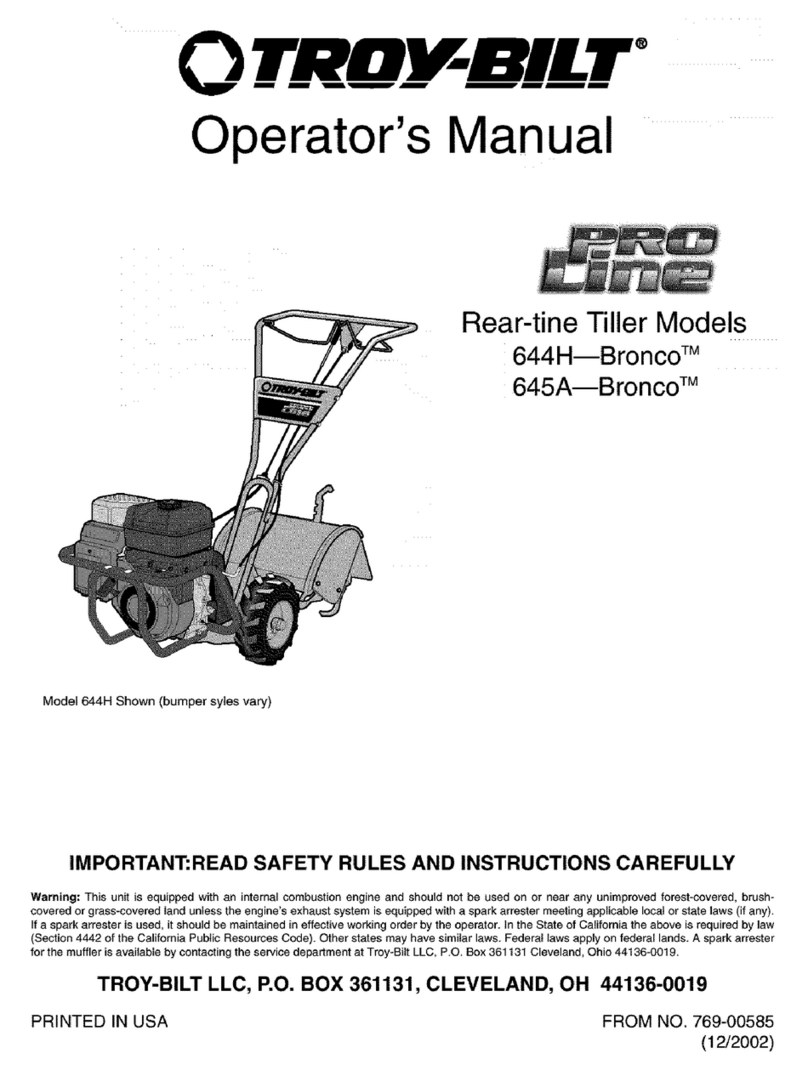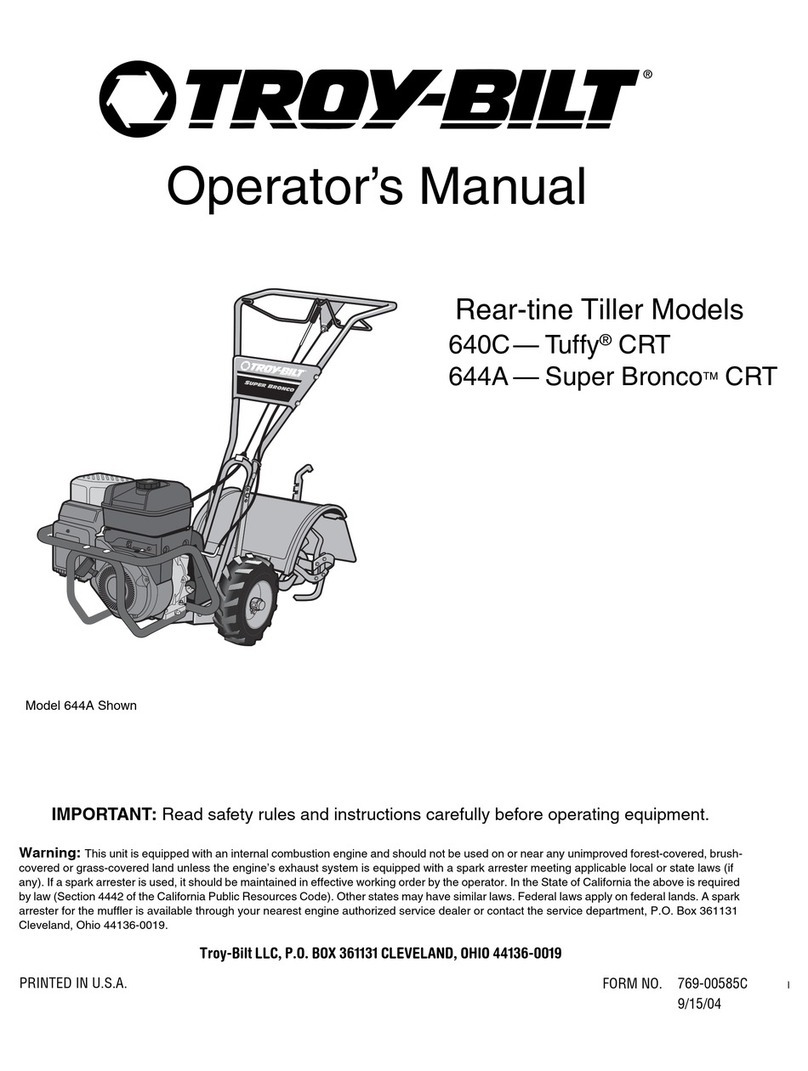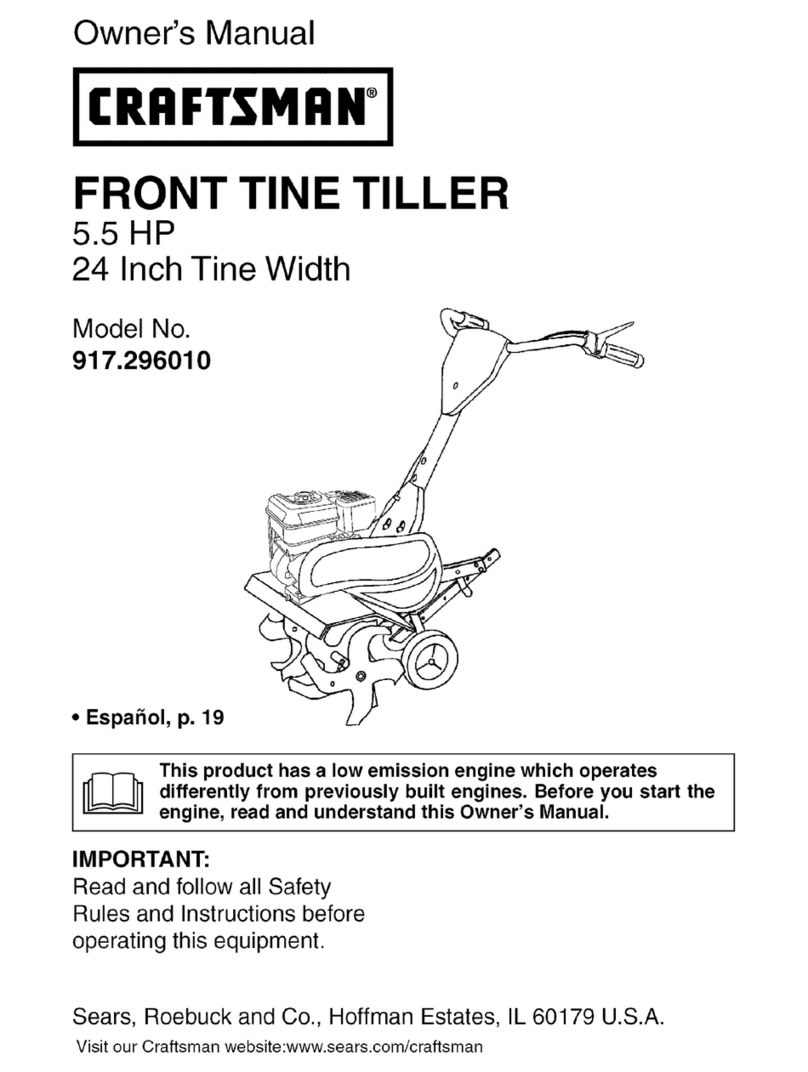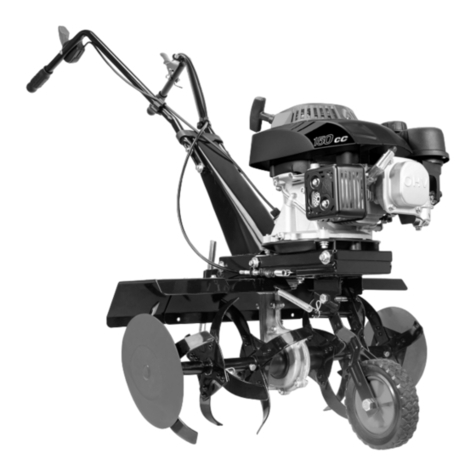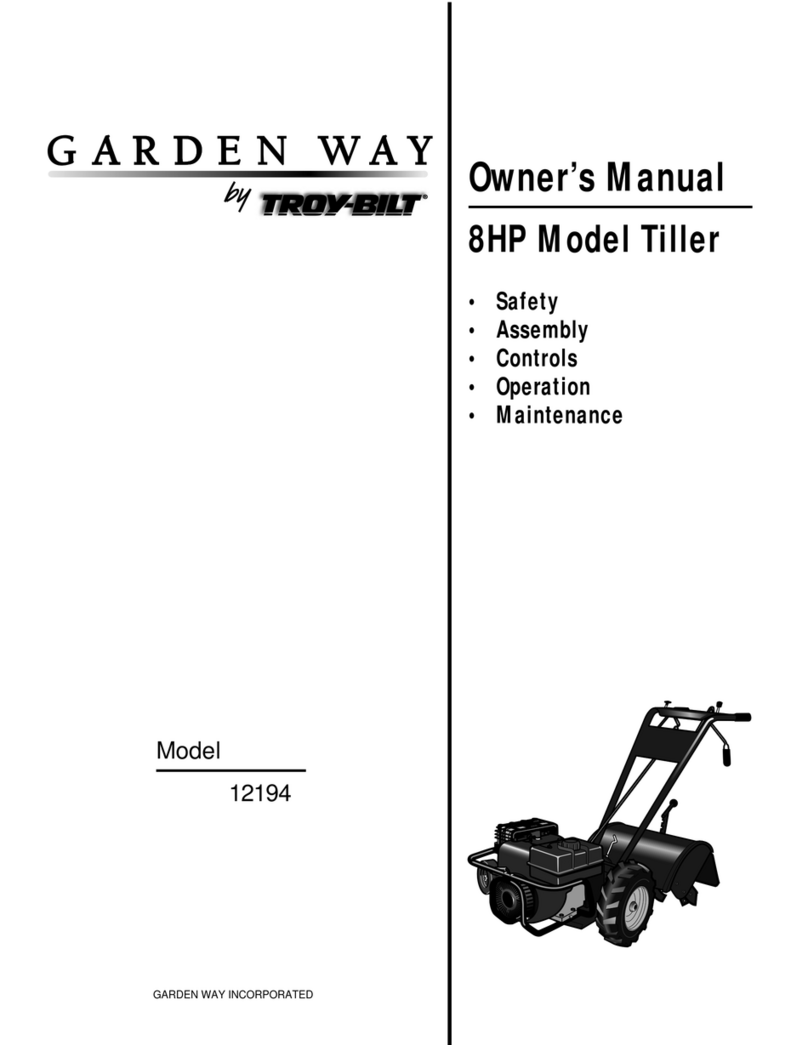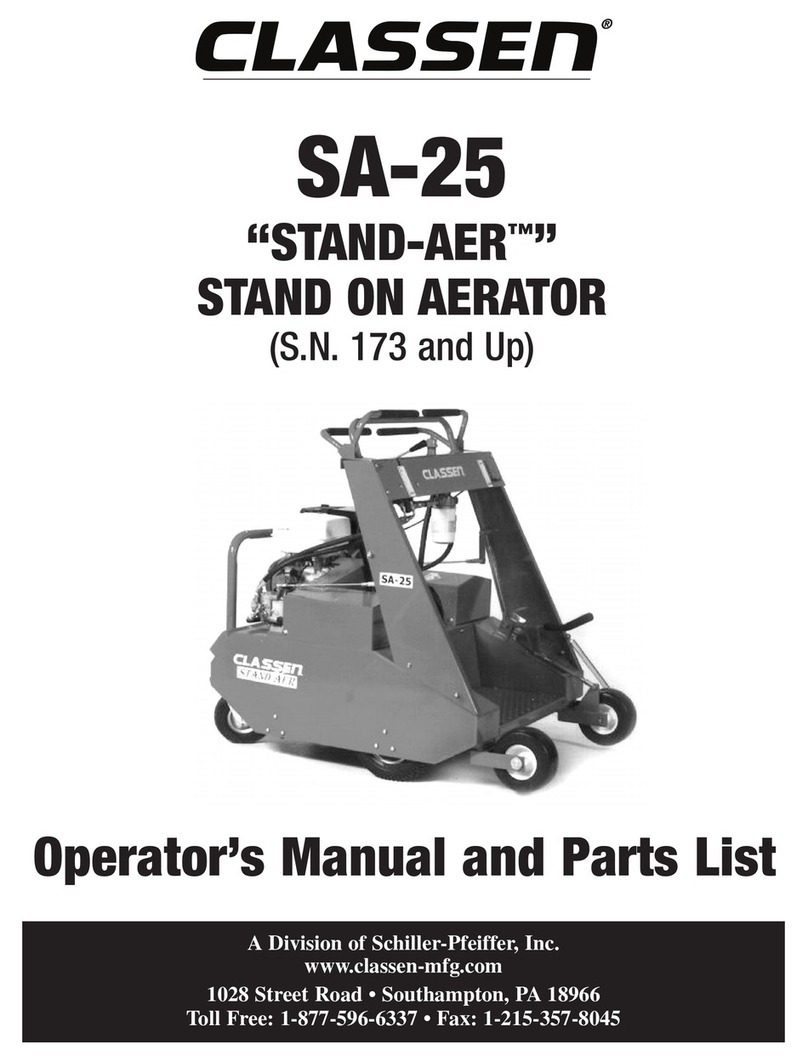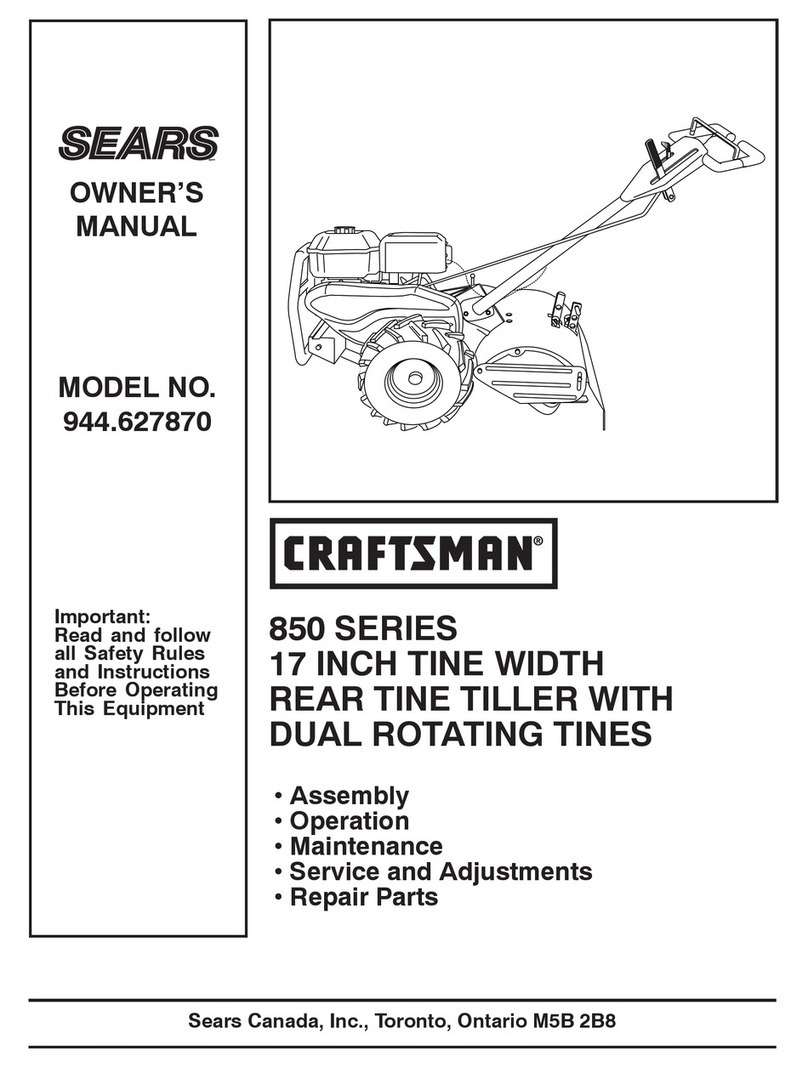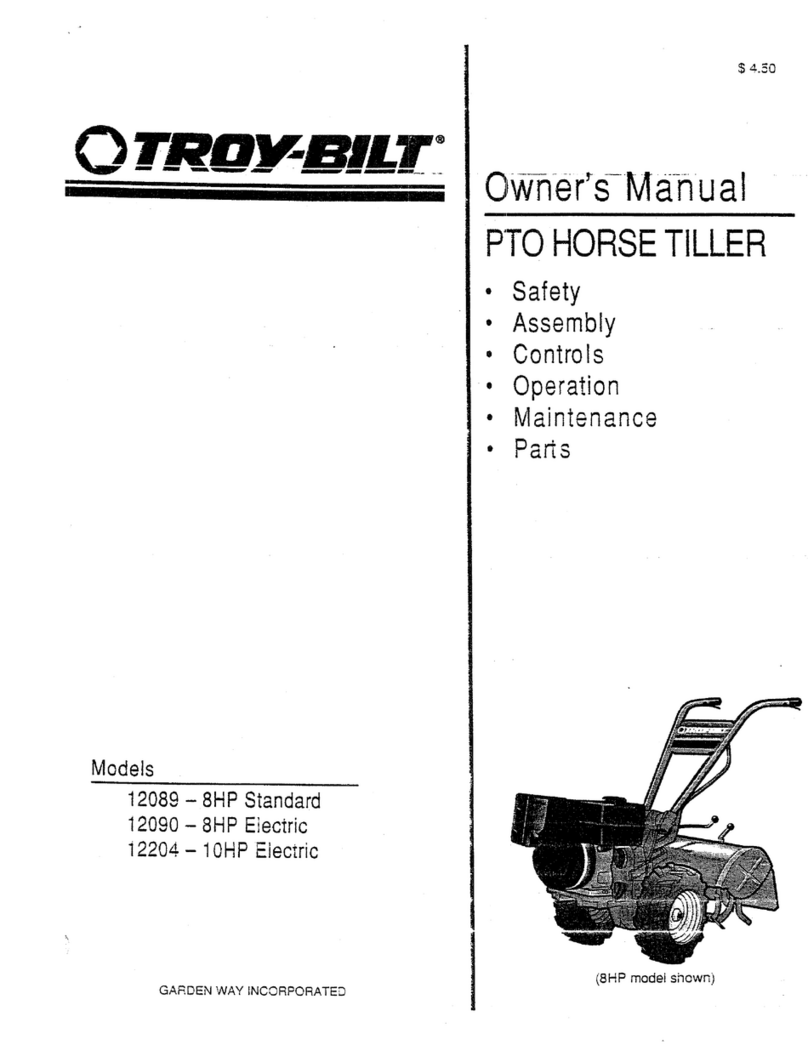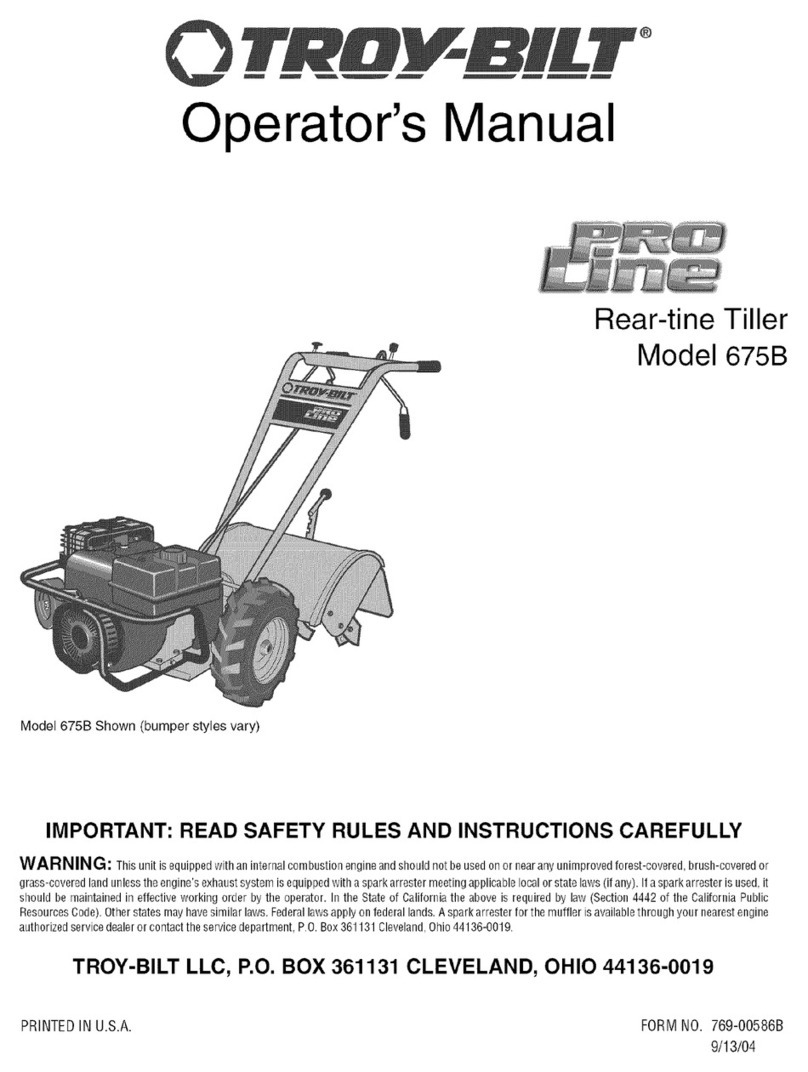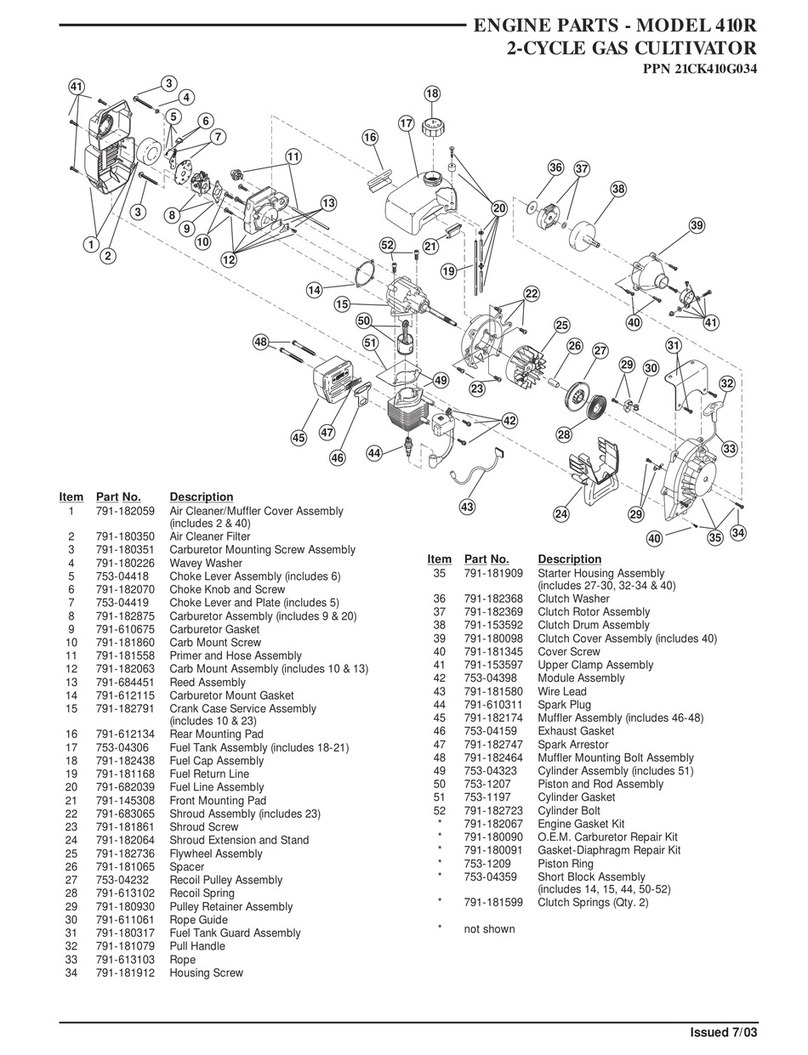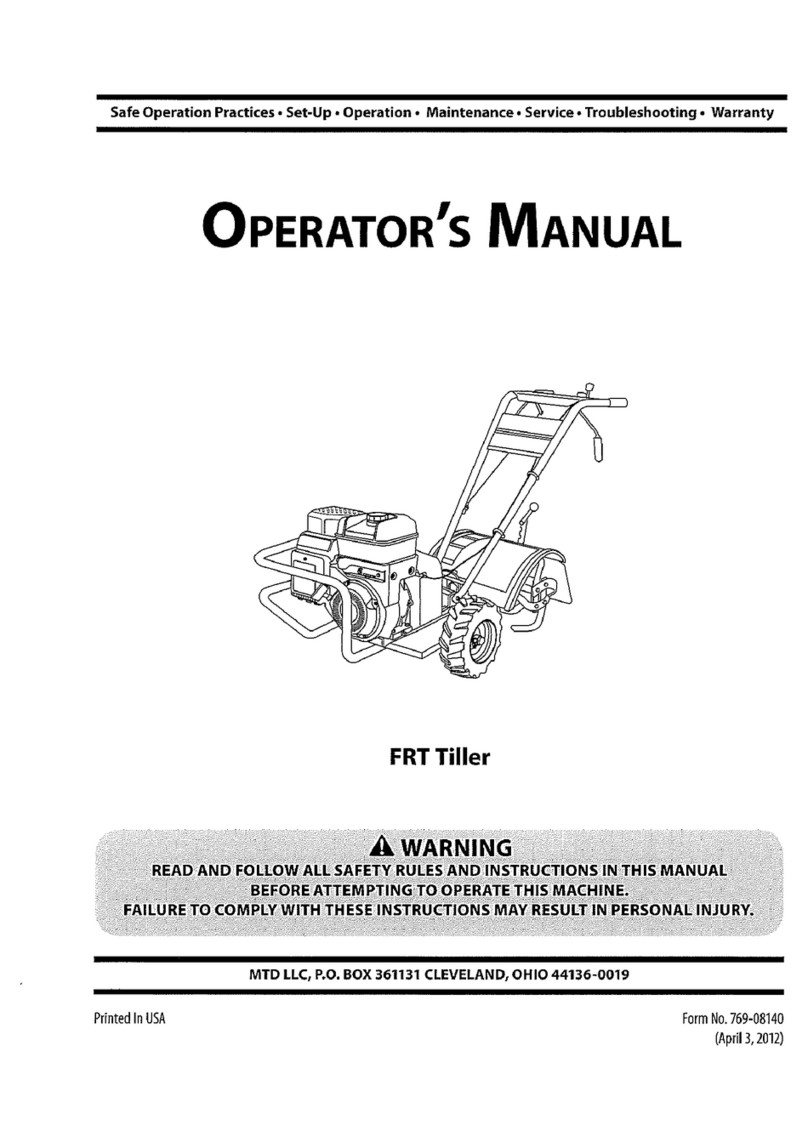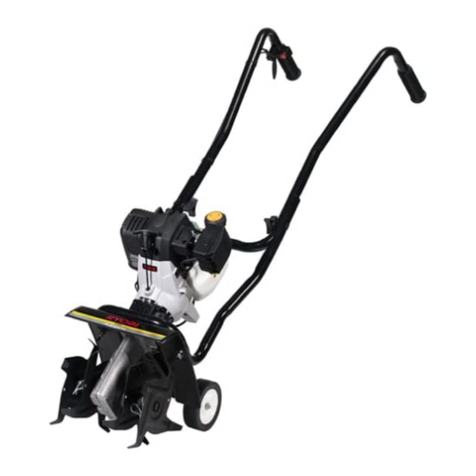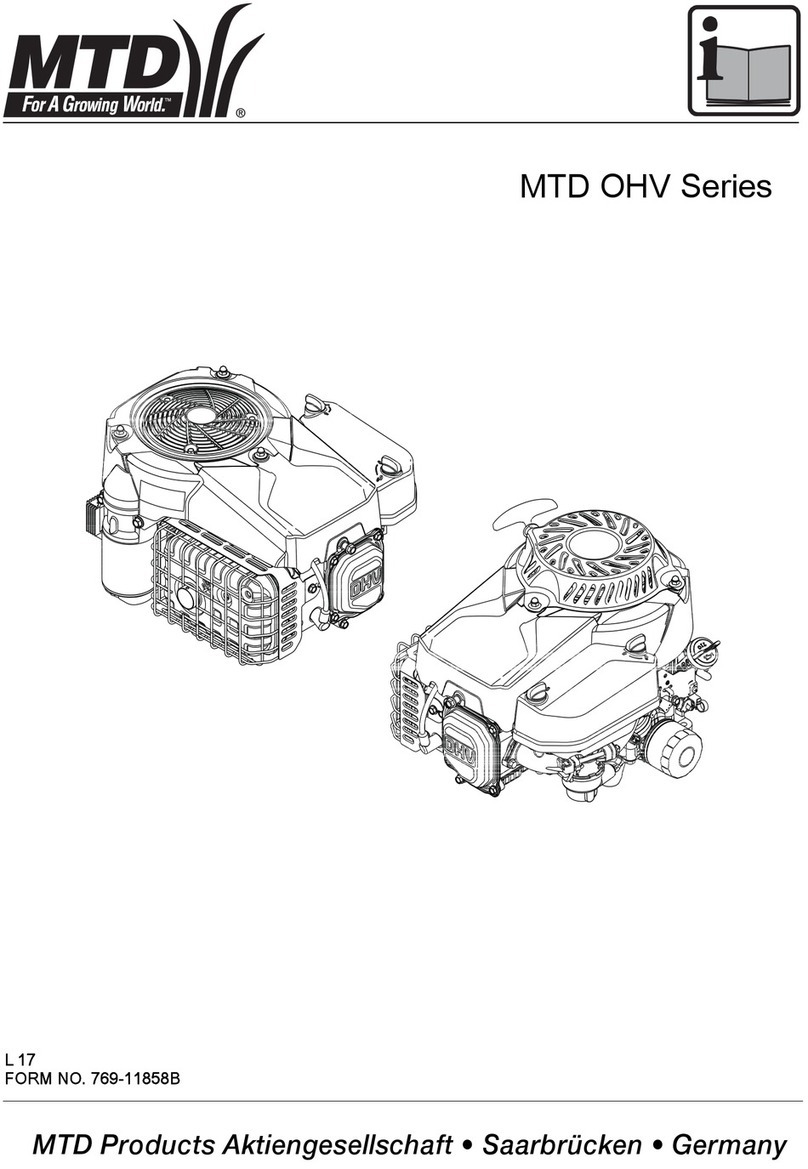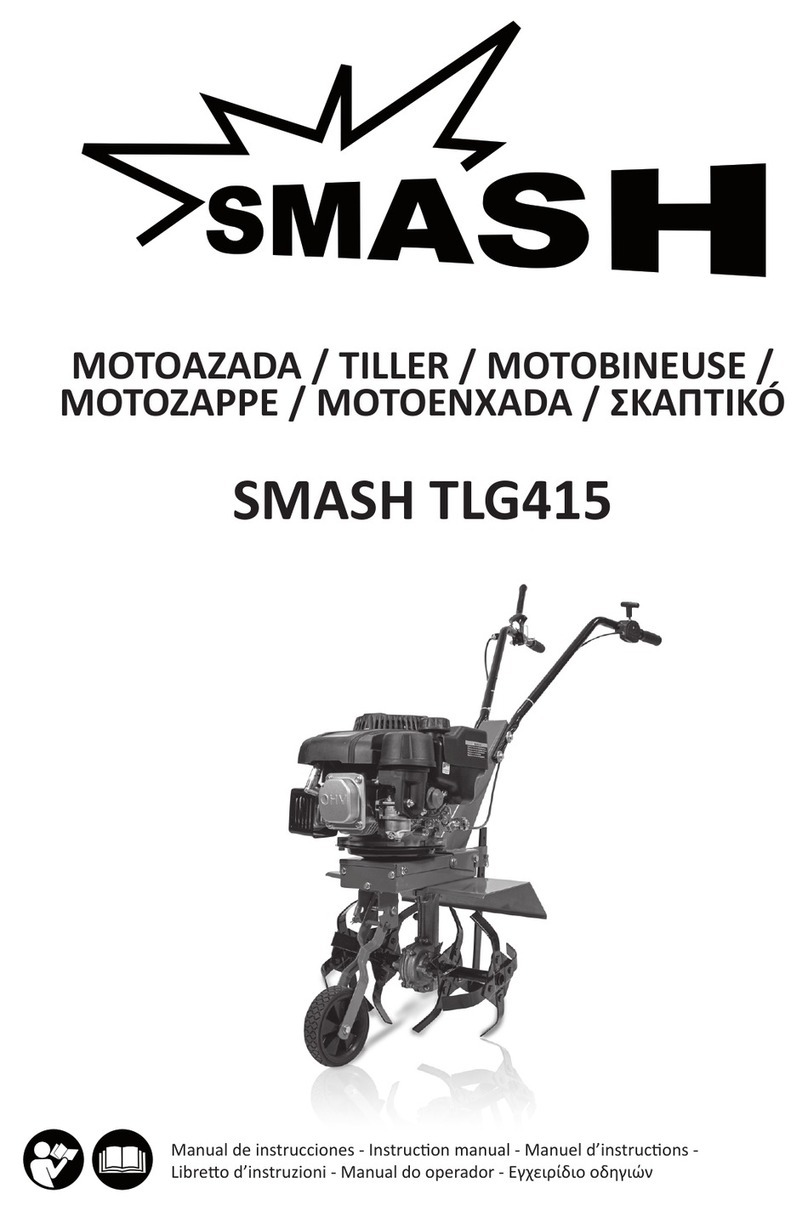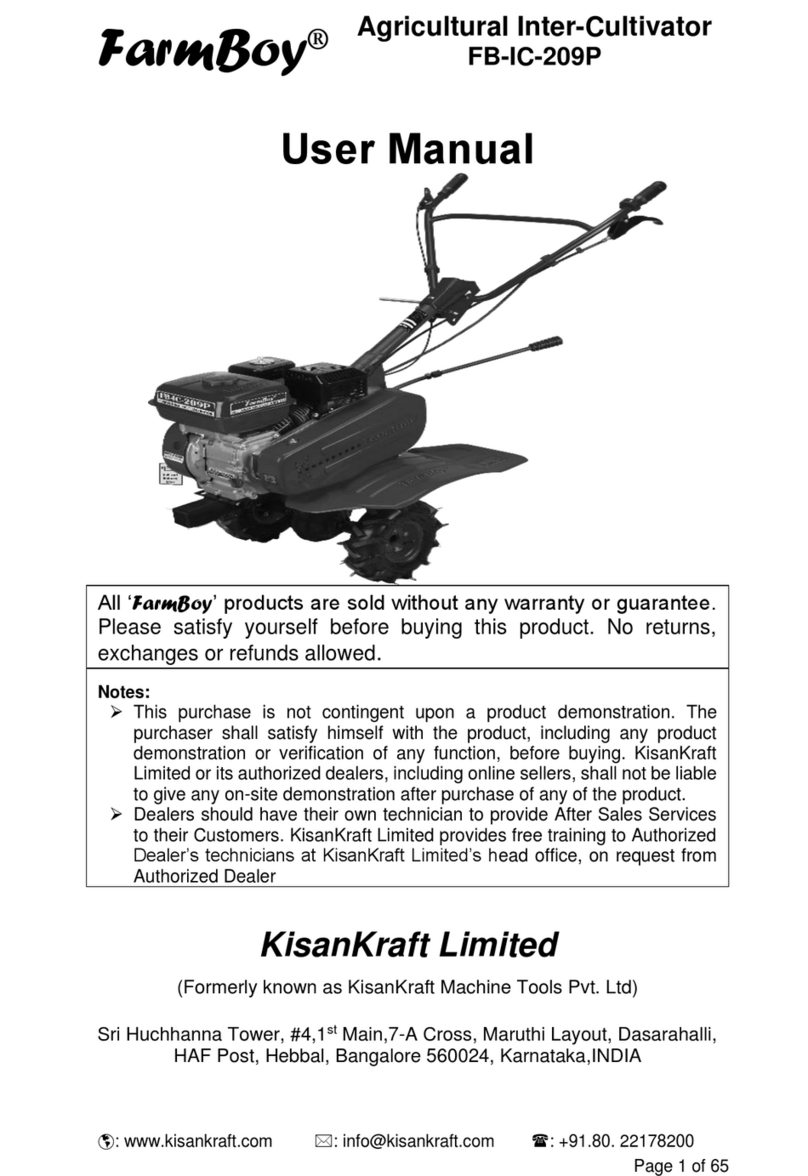
7. Takeall possible precautionswhen
leavingthe machine unattended.Stop the
engine. Disconnectspark plug wire and
move it awayfrom the spark plug. Move
Wheel GearLeverto ENGAGE.
8. Beforecleaning, repairing, or inspect-
ing, stop the engineand makecertainall
moving parts havestopped.Disconnect
the spark plug wire and prevent itfrom
touching the spark plug to preventacci-
dental starting.
9. Always keepthe tiller tine hood flap
down, unless usingthe hiller/furrower
attachment.
10. Neverusethetiller unless proper
guards, plates,or othersafetyprotective
devicesare in place.
11. Donot run engine in an enclosed area.
Engineexhaustcontains carbon monoxide
gas, a deadly poisonthat is odorless, col-
orless,and tasteless.
12. Keepchildren and petsaway.
13. Never operatethe tiller underengine
powerif the WheelGearLever isin DIS-
ENGAGE(FREEWHEEL).In this position,
the wheelswill notholdthetiller back
and the revolvingtinescouldpropelthe
tiller rapidly, possiblycausinglossof
control.Alwaysmove the WheelGear
Leverto ENGAGEbeforestarting the
engine or engaging thetines/wheelswith
ForwardClutch Control or ReverseClutch
Control.
14. Beawarethat the tiller may unexpect-
edly bounceupward or jump forward if the
tines should strike extremely hard packed
soil, frozen ground, or buried obstacles
like largestones, roots, or stumps. If in
doubt aboutthe tilling conditions, always
usethefollowing operating precautionsto
assist you in maintaining control of the
tiller:
a. Walk behindand to oneside ofthe
tiller, usingonehandonthe han-
dlebars.Relaxyourarm, butusea
securehandgrip.
b. Useshallowerdepthregulatorset-
tings, workinggraduallydeeper
with eachpass.
c. Useslowerenginespeeds.
d. Clearthe tilling area ofall large
stones,rootsand otherdebris.
e. Avoidusingdownwardpressureon
handlebars.If need be, useslight
upwardpressureto keepthetines
from diggingtoodeeply.
f. Beforecontactinghardpackedsoil
at the endofa row, reduceengine
speedand lift handlebarsto raise
tines outofthesoil.
g. In an emergency,stoptinesand
wheels byreleasingwhichever
ClutchLever isengaged.Do not
attemptto restrainthetiller.
15. Do not overloadthe tiller's capacity by
attempting to till too deeplyat too fast a
rate.
16. Neveroperatetiller at high transport
speedson hard or slippery surfaces. Look
behind and usecare when backingup.
17. Do not operatethe tiller on a slope
that istoo steepfor safety.When on
slopes,slow down and makesure you
havegood footing. Never permit the tiller
to freewheel down slopes.
18. Neverallow bystandersnearthe unit.
19. Only useattachments and accessories
that are approved bythe tiller
manufacturer.
20. Usetiller attachmentsand accessories
when recommended.
21. Neveroperatethetiller without good
visibility or light.
22. Neveroperatethetiller ifyouaretired, or
undertheinfluenceofalcohol,drugsor
medication.
23. Operatorsshallnottamperwith the
engine-governorsettingson themachine;
the governorcontrolsthemaximumsafe
operatingspeedto protecttheengineandall
moving partsfrom damagecausedbyover-
speed. Authorizedserviceshallbesought if
a problemexists.
24. Donottouch enginepartswhich may be
hotfrom operation.Letpartscooldownsuf-
ficiently.
25. Thebatteryonelectricstart modeltillers
(if soequipped)containssulfuricacid.Avoid
contactwith skin,eyes,or clothing.Keepout
ofthe reachofchildren.
Antidote-ExternalContact:Flushimme-
diatelywith lots ofwater.
Antidote-Internal:Drink largequantities
ofwater or milk. Followwith milk of mag-
nesia,beateneggs or vegetable oil. Call
a doctor immediately.
Antidote-EyeContact:Flushwith water
for 15 minutes.Getpromptmedical
attention.
26. Batteriesproduceexplosivegases.Keep
sparks,flame,andsmokingmaterialsaway.
Ventilatewhenchargingbatteriesor when
usinga batteryin anenclosedspace.
ALWAYSwearsafetygoggleswhenworking
nearbatteries.
27. Pleaseremember:You canalwaysstop
thetinesand wheelsby releasingthe
ForwardClutchControlLeveror the Reverse
ClutchControlknob(whichevercontrolyou
haveengaged),or by movingtheengine
switch (locatedonengine)to theOFF
position.
28.To loador unloadthetiller, seethe
instructionsin Section4 ofthis Manual.
29. Useextremecautionwhen reversingor
pullingthemachinetowardsyou.
30. Startenginecarefullyaccordingto
instructionsandwith feet awayfrom tines.
31. Neverpick upor carrya machinewhile
theengineis running.
MAINTENANCEANDSTORAGE
1. Keepthe tiller, attachments and acces-
sories in safeworking condition.
2. Checkall nuts, bolts, andscrews atfre-
quentintervals for proper tightness to be
surethe equipment is in safeworking con-
dition.
3. Neverstorethetillerwith fuel inthefuel
tank insidea buildingwhereignitionsources
are presentsuchashotwaterandspace
heaters,furnaces,clothesdryers,stoves,
electricmotors,etc. Allowengineto cool
beforestoring inanyenclosure.
4. Toreducethechancesofa fire hazard,
keepthe enginefreeof grass,leaves,or
excessivegrease.
5. Storegasoline in acool, well-ventilated
area,safelyawayfrom anyspark- or flame-
producingequipment. Storegasolinein an
approvedcontainer,safelyawayfrom the
reachof children.
6. Referto the storage instructions in the
Maintenancesection of this Manualand in
the separateEngineOwner's Manualfor
instructions if the tiller isto bestored for
an extendedperiod.
7. Never perform maintenancewhile the
engineis running or the spark plug wire is
connected,exceptwhenspecifically
instructed to do so.
8. If thefuel tank hasto bedrained,do this
outdoors.
